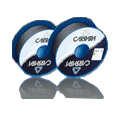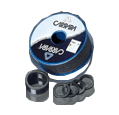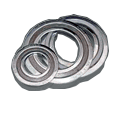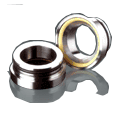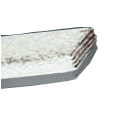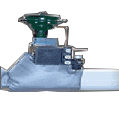FAQ: Pump Packings, Gasket Materials and More
At Steamline Engineering we have two goals. The first one is to supply you with the highest quality packing and gasket materials available at cost competitive prices. The second one is to likewise provide you with exceptional service.
No matter if you’re from the industry sector or the general public, we’re more than happy to assist with any packing and gasket material enquiry you may have. Below are some answers to questions that we often get asked.
Q What is the best way for cutting packing?
For valves and reciprocating pumps we advise using a 45 degrees skive cut packing with a circumferential adder of around two per cent. For pumps only, we advise an angled butt cut at around 75 degrees. This butt cut is due to the diverse circumferences of stuffing box ID and OD that have a circumferential over length adder of around nine per cent for small shaft dimensions but we recommend four per cent for larger shaft sizes.
Q Why are there valve packing rings manufactured with butt cut?
Some valve packing rings have butt cut because there are certain valve packing classes that have little or no cross section impregnation which makes them more likely to fray. A 75 degree butt cut is the most direct way through the packing and it greatly lessens any chance of fraying.
Q What are the benefits of precompressed rings?
A precompressed ring is where a specific ring is densified in a die to a functioning density. When fitted, precompressed rings share the same density and they’ll effectively respond on gland pressure. This results in a cut that closes efficiently which then provides additional over length to make up for any shrinkage. The die also ensures the OD is well sealed. In operation, it results in less ring stack settling as well as more bolt adjustment options becoming available.
Q Is it important to refer to the temperature limits shown in the technical details featured on the pump packing?
The limits detailed on the pump packing indicate its weakest components. As an example, a carbon fibre could manage temperature around 400°C/750°F but it may have cross sectional impregnation – such as PTFE – which will lessen its temperature tolerance considerably to 280°C/550°F. Non-adherence to the temperature limits will result in the PTFE decomposing which could have adverse effects on both material and people.
Q Is there any way that I can be sure that I’m getting 100 per cent GFO fibre in any Carrara packing that I purchase through you?
Carrara makes quality packing products and they’re an official braider for Gore. You can also see the text on the pump packing where it states that it’s 100 per cent GFO.
Q But how can I be sure that if the pump packing says 100 per cent GFO that it really is GFO fibre?
Gore is one of the most innovative brands in the world and they have in place a thorough auditing program for its seal of assurance partners, such as ourselves. Consider it Gore’s guarantee to back up what is stated on the pump packing.
Q What is the right material for my gasket application?
That depends on what you are going to use the material for but an easy way to ensure you make the right choice is to use our gasket material selector and prosperities of gasket materials charts from Carrara. Alternatively you can contact us and we’ll be happy to give you some free advice.
Q How thick should the material be for my gasket application?
Generally it’s best to use the thinnest material possible because the thicker the material; the more pressure is applied on the gasket. The width of the material is a result of the state of the flanges involved and the compression needed for sealing.
Further Information
If you want to know more about our products, including Firefly Millboards and Carrara pump packings, phone us on 03 9729 1129 or enquire online.


